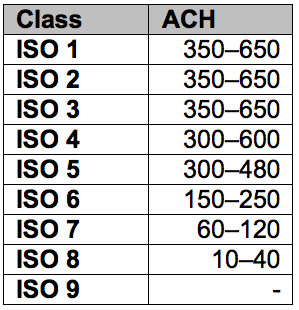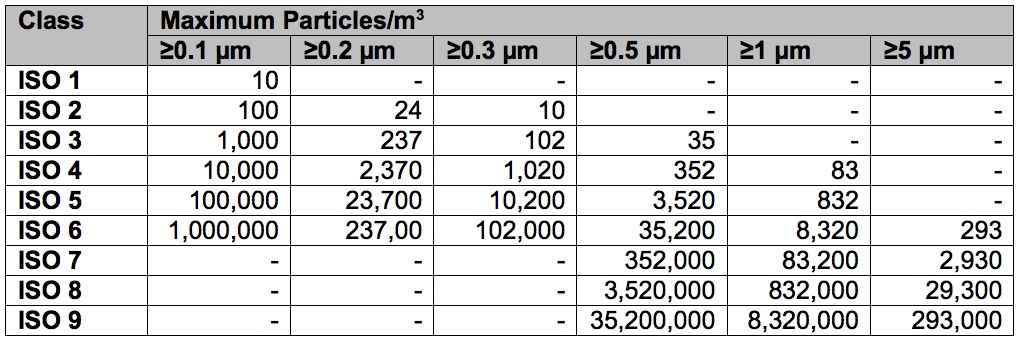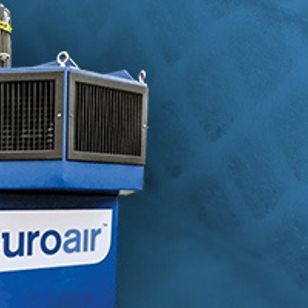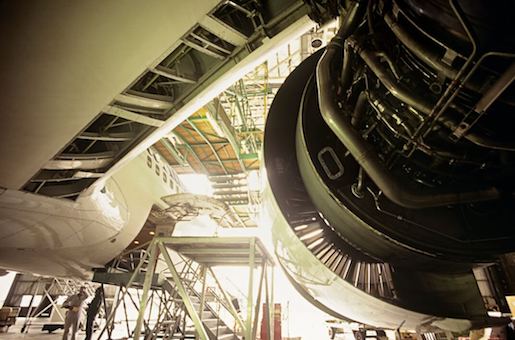ISO Clean Room Classification: What You Need to Know
Understanding ISO Clean Room Classification is essential to selecting the right clean room for your manufacturing environment. Most clean rooms installed today (over 90 percent) are positive-pressure rooms that are categorized according to ISO 14644-1 clean room classifications, which rank clean rooms according to the number of particles per cubic meter by micrometer size.
This is an effective way of classifying positive-pressure clean rooms and for indicating how “clean” they are. Positive-pressure rooms are designed to protect the process inside from external contaminants and prevent external air from entering the clean room. This is in contrast to negative-pressure rooms, which are designed to trap contaminants in the room — a useful operation when dealing with infectious diseases, pathogens, or other biohazards that you do not want to escape from a controlled environment.
Aerospace clean rooms, as well as clean rooms for pharmaceutical manufacturing, are typically positive-pressure clean rooms. Requirements for a specific grade of clean room depend on the application, and range from ISO Class 9 (the least strict) to ISO Class 1 clean room (the most stringent).
Positive-Pressure and ISO Clean Room Classifications
The way a positive-pressure clean room works is key to understanding ISO clean room standards. With cleaned air forced in and contaminants ejected, positive-pressure clean rooms are classified according to the concentration of airborne particles inside of them and the size of those particles — the goal being to reduce the number and size of the particles in a clean room through ongoing pressurization and venting.
With cleaned air forced in and contaminants ejected, positive-pressure clean rooms are classified according to the concentration of airborne particles inside of them and the size of those particles — the goal being to reduce the number and size of the particles in a clean room through ongoing pressurization and venting.
ISO clean room classifications, instituted by the International Organization for Standardization, has been in effect since 2001. It classifies clean rooms by cross-referencing the size of particulate measured (e.g., 0.5 µm) by the maximum number of particulate of that size acceptable in a clean room of that type (e.g., 3,520). As shown in the chart below, the ISO 1 clean room standard is the strictest and most stringent classification.
Figure 1. ISO 14644-1 Clean Room Classifications
ISO clean room classifications roughly conform to the older U.S. Federal Standard 209, which was in effect from 1998–2001. Although it has been officially out of use for years, it is still widely cited and can be easily cross-referenced with ISO clean room classifications.
Figure 2. U.S. Federal Standard 209 Clean Room Classifications

Beyond ISO Clean Room Standards: Other Classifications
In addition to keeping the concentration of airborne particles below a specified limit for ISO clean room standards, clean rooms for microelectronic facilities must also attend to air change rate (ACR), according to an appendix to the ISO 14644-1 standard. This factor can also become important for medical and pharmaceutical manufacturing.
ACR is measured in air change rate per hour (ACH), which can be determined by gauging the total airflow volume supplied to the clean room — or vented from it.
Nearly all ISO clean room standards can be correlated to a recommended ACH range. Finding the correct ACH for an application will depend on several different factors including the number of employees in a clean room, the processes employed inside, and the typical frequency of entries and exits from the clean room space.
Figure 3. ACH Ranges for ISO Clean Room Classifications

Conclusion
Selecting the right industrial air cleaning system is an important decision for any business that needs to uphold clean room standards in its manufacturing environment.
To discuss how to meet your ISO clean room standards, contact us today to schedule a consultation with one of Duroair’s clean air experts.



